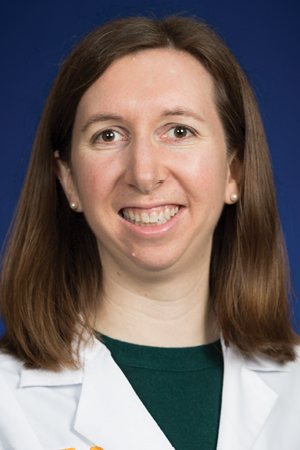APS 101 takes you through the ins and outs of APS, providing facts and key information to help you better understand the disease.

APS 101 is written by Jacqueline Madison, MD, Assistant Professor in the Division of Rheumatology and member of the APS Research Labs. In this month’s edition, Dr. Madison discusses incidence and prevalence, risk factors and diagnosis, treatment, and challenges for children with APS.
Pediatric APS
Do children get APS? The short answer is yes. Children do get APS. But how often kids get APS is not entirely clear.
As you probably know, APS in adults is not terribly common. For every 100,000 people, there will be two to five new cases per year: this is called the incidence. For a given 100,000 people, a total of 40 to 50 of them have APS: this is called the prevalence [1]. We don’t know either incidence or prevalence in children, but one study looked at 1,000 patients who have APS, and in that group, only 2.8% were diagnosed with APS at 15 years of age or younger [2]. So, APS is even more rare in children. That said, we wonder whether more kids than we know have APS or are at risk for APS without us knowing about it - yet. Because children have fewer other risk factors for blood clots (like high blood pressure and smoking), we may not yet know that they are at risk for clots or pregnancy problems until they get older.
Risk Factors and Diagnosis
Could we do more to identify children who are at risk for getting APS? Maybe! But so far, it’s difficult! Studies that review medical records of children diagnosed with APS have given us some clues as to how we might do better. We did a study like this at U-M [3], and other similar studies have been done around the world. None of them are very big studies, but if you put them together, there do seem to be some important patterns. There are certain features of APS that aren’t part of the classification criteria (see my previous APS 101 article on this topic!) that seem to be especially common in children diagnosed with APS. What we found at U-M was that over half of pediatric patients diagnosed with APS also had either anemia or low platelet counts. Some had skin changes (livedo), and others had neurological changes. Similar findings have been seen in other studies, too [4].
So maybe we need to look more closely at children who have such features and test them earlier (before they develop a blood clot). As APS is becoming more well known, some doctors do seem to be looking more closely for APS, but in the future, it may help to come up with a more definite strategy for diagnosis in children who are at risk for complications from APS.
Treatment
Are kids treated differently than adults with APS? In a lot of ways, they are medically treated the same, especially once they have already had a blood clot. We work very closely with our expert pediatric hematologists who understand that childrens’ coagulation systems (the system in the body that balances between blood thinning and clotting), especially in very young children, are still developing and may be a little different than fully grown adults. For younger children, low-molecular-weight heparin (also known as Lovenox) is preferable in a lot of cases.
Challenges
Are there other particular worries for children with APS? In our study, there were a lot of children who had multiple blood clots (almost half!). Part of that seemed to be related to getting them on the right medication, and another part seemed to be that children or adolescents sometimes had a hard time sticking to their medications. It’s really hard to be a kid who has to be on medications all the time, especially blood thinners, and/or injected medications (like Lovenox). Can you imagine being a teenager who has to give themselves a shot every day? Or a pre-teen who needs frequent blood monitoring (either INR or anti-Xa levels)? It’s not easy and not fun for anyone. We need to work with all patients, especially younger people, to make sure we are all on the same team in promoting our patients’ health in the most feasible way possible to fit into their lives as a whole, developing person.
We think there is likely a lot more to learn from children with APS. They oftentimes don’t have any other risk factors for clots (these other risk factors can confuse our studies), so maybe by studying these young patients, we can learn more clearly why some people are at risk for APS. This is also a super important group of patients in whom we could make a big difference in their lives by preventing the problems of APS early in life. We are including more and more children in our APS research studies to try to help all people with APS and those at risk for developing APS.
References:
- Dabit, J.Y., et al., Epidemiology of Antiphospholipid Syndrome in the General Population. Curr Rheumatol Rep, 2022. 23(12): p. 85.
- Cervera, R., et al., Antiphospholipid syndrome: clinical and immunologic manifestations and patterns of disease expression in a cohort of 1,000 patients. Arthritis Rheum, 2002. 46(4): p. 1019-27.
- Madison, J.A., et al., Pediatric antiphospholipid syndrome: clinical features and therapeutic interventions in a single center retrospective case series. Pediatr Rheumatol Online J, 2022. 20(1): p. 17.
- Madison, J.A., Y. Zuo, and J.S. Knight, Pediatric antiphospholipid syndrome. Eur J Rheumatol, 2019. 7(Suppl 1): p. 1-10.
Join Our Email List
If you are interested in receiving updates on our patient care and research efforts, please join our APS Program email list.



